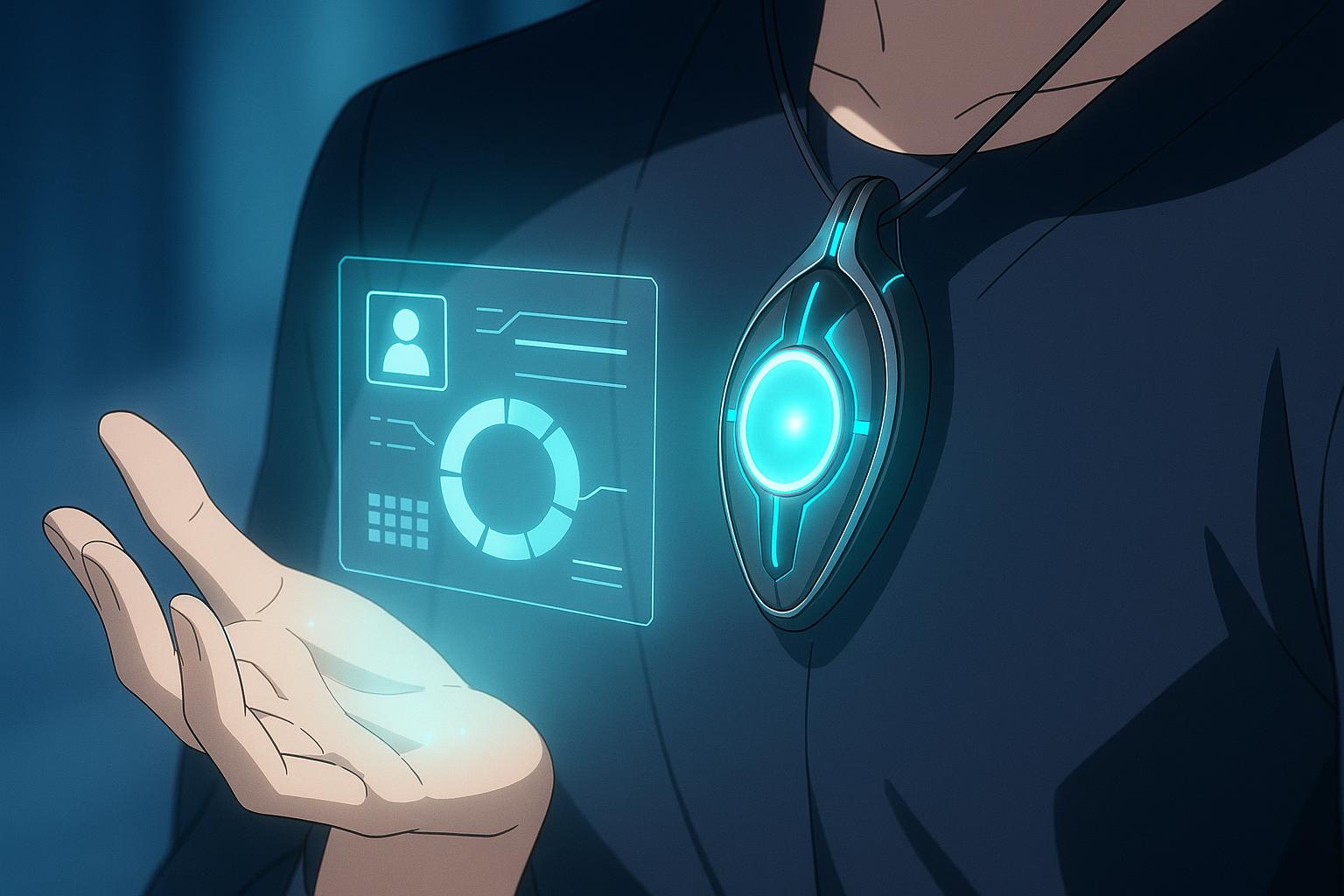OpenAI CEO Sam Altman and ex-Apple design chief Jony Ive join forces to create a groundbreaking AI-driven device that promises to transcend traditional smartphones, offering seamless, unobtrusive technology integration and addressing screen fatigue in daily life.
The partnership between OpenAI CEO Sam Altman and former Apple design chief Jony Ive has sparked significant intrigue in the tech world as the duo embarks on a groundbreaking venture to create an AI-driven device. This collaboration signals a potential evolution in the landscape of technology, as both figures aim to transcend conventional hardware paradigms, moving beyond the smartphone era that has dominated since the inception of the iPhone in 2007.
The project, which involves the acquisition of Ive’s design studio, LoveFrom, by OpenAI, is poised to reshape not only the devices we use but how we interact with technology in our daily lives. With a team of around 55 engineers and researchers now under their wing, Altman and Ive are focused on developing an innovative piece of hardware designed to communicate seamlessly with users while occupying a naturally integrated role in their environment. This aspiration aligns with the broader concept of “ambient computing,” where technology operates unobtrusively, enhancing rather than interrupting our daily tasks.
While specifics regarding the device remain somewhat elusive, indications suggest it will not take the form of a smartphone or even smart glasses. Rather, it could be a portable device that allows users to engage with technology intuitively and efficiently. Analysts like Ming-Chi Kuo speculate it might resemble an AI-powered pendant or wearable device, offering functionalities like a microphone, speaker, motion sensors, and possibly even a mini-projector for displaying information directly onto a user’s hand.
This device aims to counter screen fatigue, which has become a significant concern with the pervasive use of smartphones. In discussions about the initiative, Altman has made it clear that he envisions a product that transcends existing market offerings, contrary to the trajectory of other tech companies who have recently pivoted toward smart wearables and augmented reality technologies. Meanwhile, Jony Ive has been vocal about the inadequacies of previous attempts in the space, critiquing products like the Humane AI Pin, which failed to deliver on its ambitious promises due to design and functionality flaws.
OpenAI’s interest in developing hardware is perhaps a strategic response to maintaining relevance amidst fierce competition from established tech giants, especially as developments at Google I/O showcased integrated ecosystems and powerful AI capabilities. The collaboration could serve as a counterbalance, providing a fresh narrative in a landscape cluttered with traditional computing paradigms.
The new venture is reportedly being backed by substantial funding, with estimates suggesting it could raise up to $1 billion by the end of the year. This financial support underlines the significant investor interest in the potential of generative AI and its applications in consumer devices. As OpenAI explores commercialization pathways while maintaining its nonprofit roots, the focus will be on ensuring that any new product successfully integrates the advanced capabilities of AI with user-friendly design.
As Altman and Ive move forward, their partnership represents a melding of visionary leadership and design prowess, reminiscent of previous collaborations that have shaped the tech industry. The outcome of this project may well determine the future trajectory of AI and consumer technology, making it a development worth closely monitoring.
Reference Map:
Source: Noah Wire Services
- https://thegadgetflow.com/blog/openai-device/ – Please view link – unable to able to access data
- https://www.axios.com/newsletters/axios-am-6c1b646f-6e3a-44ef-b07c-702481c40ff2 – OpenAI has acquired Jony Ive’s startup, io, aiming to create AI-driven consumer devices that move beyond traditional PCs and smartphones. Ive, known for his Apple design legacy, joins OpenAI CEO Sam Altman in this initiative. Their new company, io, may focus on devices with cameras like advanced headphones but not smartphones. This move parallels other tech giants exploring smart glasses and AR technologies. ([axios.com](https://www.axios.com/newsletters/axios-am-6c1b646f-6e3a-44ef-b07c-702481c40ff2?utm_source=openai))
- https://apnews.com/article/52c72786e54f0ead8b04d037c30d6754 – OpenAI has enlisted legendary iPhone designer Jony Ive to spearhead a new AI hardware initiative, acquiring his company io Products in a deal valued at nearly $6.5 billion. The acquisition includes $5 billion in equity, and OpenAI already held a 23% stake in io from a previous partnership. Ive, known for his iconic design work at Apple alongside Steve Jobs, co-founded io in 2023 after beginning a quiet collaboration with OpenAI CEO Sam Altman. Although Ive won’t become an OpenAI employee, his design firm LoveFrom will maintain independence while leading design efforts across OpenAI and io. The companies aim to develop “physical AI embodiments”—devices that bring generative AI into the physical world, potentially through cars, robots, or AI-powered wearables similar to those by Google and Meta. The io division will be led by OpenAI executive Peter Welinder, who has experience in early-stage hardware and robotics research. OpenAI remains under nonprofit governance but is exploring structural changes to grow commercially. Both LoveFrom and OpenAI are based in San Francisco, close to the city’s historic creative neighborhoods. ([apnews.com](https://apnews.com/article/52c72786e54f0ead8b04d037c30d6754?utm_source=openai))
- https://www.theverge.com/2023/9/27/23892135/jony-ive-sam-altman-ai-device-openai-ceo-apple-designer – Apple’s former chief design officer, Jony Ive, and OpenAI CEO Sam Altman are allegedly exploring opportunities to collaborate on building an unspecified artificial intelligence “hardware device,” according to two sources speaking to The Information. There’s currently no word on what the device will be, or what purpose it serves. The Information claims that Ive and Altman, who are friends, have been discussing what “new hardware for the AI age could look like.” It’s currently unclear if the device will be created by OpenAI or a third-party manufacturer, or indeed if the duo will decide to build the device at all. This wouldn’t be the first time that Altman has partnered with a former Apple designer on new hardware. Thomas Meyerhoffer — who was Ive’s first hire at Apple — designed the spherical retina-scanning Orb for Altman’s Worldcoin crypto project. Altman has a history of working with ex-Apple elite. ([theverge.com](https://www.theverge.com/2023/9/27/23892135/jony-ive-sam-altman-ai-device-openai-ceo-apple-designer?utm_source=openai))
- https://www.theverge.com/2024/9/21/24250867/jony-ive-confirms-collaboration-openai-hardware – A year after multiple publications reported Jony Ive was collaborating with Sam Altman on a hardware project, Ive himself has confirmed it in a profile in the New York Times. There aren’t a lot of details. He met Altman through Brian Chesky, CEO of AirBNB, and the project is being funded by Ive and the Emerson Collective, Laurene Powell Jobs company. The New York Times claims it could raise $1 billion in funding by the end of the year. ([theverge.com](https://www.theverge.com/2024/9/21/24250867/jony-ive-confirms-collaboration-openai-hardware?utm_source=openai))
- https://arstechnica.com/information-technology/2023/09/jony-ive-and-openais-altman-reportedly-collaborating-on-mysterious-ai-device/ – Jony Ive, the renowned designer of the iPhone, and OpenAI CEO Sam Altman have been discussing building a new AI hardware device, according to two people familiar with the conversations. SoftBank CEO and investor Masayoshi Son has talked to both about the idea, according to one of these people, but it is unclear if he will remain involved. One person said there have been discussions about SoftBank investing in a venture related to it. If a collaboration comes to pass, it would represent a high-profile alliance and a big new foray for one of the most famous designers in the world and the young entrepreneur leading one of the most-watched tech companies. Ive left Apple in 2019 and started his own design studio called LoveFrom that works on a range of projects. ([arstechnica.com](https://arstechnica.com/information-technology/2023/09/jony-ive-and-openais-altman-reportedly-collaborating-on-mysterious-ai-device/?utm_source=openai))
- https://www.macrumors.com/2024/09/23/jony-ive-working-on-new-device-openai/ – Former Apple chief design officer Jony Ive has officially confirmed his involvement in an artificial intelligence hardware project with OpenAI CEO Sam Altman. The confirmation appeared in a profile of the designer by The New York Times, putting to rest speculation that began nearly a year ago about a potential collaboration between the two figures. The AI hardware venture is reportedly being funded by Ive and the Emerson Collective, a company founded by Laurene Powell Jobs. According to the report, the project could secure up to $1 billion in funding by the end of the year, signaling significant investor interest in the endeavor. Despite its high-profile leadership, the project is still in its early stages, with only 10 employees currently on board. However, the team includes notable former Apple designers Tang Tan and Evans Hankey, both of whom worked closely with Ive on the iPhone. Ive’s design firm, LoveFrom, is spearheading the device’s design process. The collaboration between Ive and Altman reportedly stemmed from discussions about the potential for generative AI to enable new types of computing devices. The technology’s ability to handle complex requests is seen as a key factor in creating novel user experiences that go beyond traditional software capabilities. While specific details about the AI product and its release timeline remain under wraps, the team has already established a significant presence in San Francisco, working out of a 32,000-square-foot office building, part of a $90 million real estate acquisition by Ive on a single city block. The new venture marks Ive’s most significant technology project since departing Apple in 2019. After leaving his role as chief design officer, Ive continued to work with Apple as a consultant through LoveFrom until 2022, when the partnership officially concluded. ([macrumors.com](https://www.macrumors.com/2024/09/23/jony-ive-working-on-new-device-openai/?utm_source=openai))













